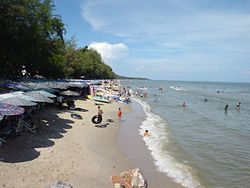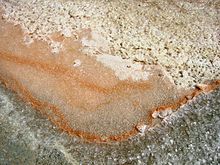팩트르1
PHACTR1| 팩트르1 | |||||||||||||||||||||||||
|---|---|---|---|---|---|---|---|---|---|---|---|---|---|---|---|---|---|---|---|---|---|---|---|---|---|
| 식별자 | |||||||||||||||||||||||||
| 별칭 | PHACTR1, RPEL, RPEL1, dJ257A7.2, 인산염 및 액틴 조절기 1, EIEE70, DE70 | ||||||||||||||||||||||||
| 외부 ID | OMIM: 608723 MGI: 2659021 호몰로진: 33597 GeneCard: PHACTR1 | ||||||||||||||||||||||||
| |||||||||||||||||||||||||
| |||||||||||||||||||||||||
| |||||||||||||||||||||||||
| |||||||||||||||||||||||||
| 직교체 | |||||||||||||||||||||||||
| 종 | 인간 | 마우스 | |||||||||||||||||||||||
| 엔트레스 | |||||||||||||||||||||||||
| 앙상블 | |||||||||||||||||||||||||
| 유니프로트 | |||||||||||||||||||||||||
| RefSeq(mRNA) |
| ||||||||||||||||||||||||
| RefSeq(단백질) |
| ||||||||||||||||||||||||
| 위치(UCSC) | Chr 6: 12.72 – 13.29Mb | Cr 13: 42.68 – 43.14Mb | |||||||||||||||||||||||
| PubMed 검색 | [3] | [4] | |||||||||||||||||||||||
| 위키다타 | |||||||||||||||||||||||||
| |||||||||||||||||||||||||
인산염과 액틴 조절기 1(PHACTR1)은 인간에서 6번 염색체의 PHACTR1 유전자에 의해 인코딩되는 단백질이다.[5] 그것은 뇌의 글로부스 팔리두스에서 가장 현저하게 표현된다.[6] PHACTR1은 액틴을 결합하고 액틴 cytoskeleton의 재구성을 조절하는 액틴 및 단백질인산효소 1(PP1) 결합 단백질이다.[7] 이 단백질은 게놈전위 연관 연구를 통해 관상동맥질환과 편두통과 연관되어 왔다.[8][9] PHACTR1 유전자는 또한 관상동맥 질환의 위험 증가와 관련된 27개의 SNP 중 하나를 포함한다.[9]
구조
유전자
PHACTR1 유전자는 6p24.1 대역의 6번 염색체에 존재하며 19개의 exon을 포함한다.[5] 이 유전자는 대체 스플라이싱을 통해 2개의 이소성형을 생성한다.[10]
단백질
PHACTR1은 인산염 및 액틴 조절기 계열의 구성원으로 4개의 RPEL 반복측정기를 포함하고 있으며, 이 중 3개는 C단자에 상주하며 3개의 액틴 단량체를 묶는다.[10] PHACTR1은 이러한 RPEL 반복측정을 포함하는 영역에서 PP1을 바인딩한다. PHACTR1은 비카논적 RVxF 모티브, ϕ motif 모티브, Arg 모티브, Trp 모티브를 사용하여 다른 PP1 공동 인자들과 유사한 방식으로 PP1을 감싸고 있다. PHACTR1-PP1 콤플렉스는 활성 홀로인산효소로 기판을 순차적으로 결합하고 탈인산화한다.[11]
PHACTR1은 또한 RPEL 반복측정 근처에서 발견된 8개의 PKA 인산화 사이트와 7개의 PKC 인산화 사이트를 포함할 것으로 예측된다.[12]
함수
PHACTR1은 PP1 결합 단백질로 뇌에서 고도로 발현되며 PP1 활성도와 F-actin 리모델링을 제어하는 것으로 보고되고 있다.[13] PHACTR1은 NRP-1 수용체와 VEGF-R1 수용체를 통해 NRP와 VEGF에 의해 유도되어 튜불생성, 액틴 중합, 라멜리포디알 역학을 제어할 수 있다.[14] 이 기능을 통해 PHACTR1은 세포 운동성과 혈관 형태생식에 역할을 할 것을 제안한다.[15] 한편, PHACTR1의 억제는 죽음의 세포 수용체들의 발현을 증가시켜 세포외 사멸을 초래한다.[13]
PHACTR1 로쿠스는 관상동맥질환과 심근경색(MI)을 연구하는 여러 게놈전역학 연구에서 흔히 확인되지만 심장에 PHACTR1의 기능에 대해서는 거의 알려져 있지 않다.[15]
임상적 유의성
성장 인자(TGF)-β 변환에 의한 PHACTR1의 상향 조절이 유방암 세포 라인에 설명되어 있으며, TGF-β 신호 경로와의 연관성을 잠재적으로 가리키고 있는데, 이는 편두통의 유전적 성향에도 연루되어 있고 마르판과 로이스-디에츠 신드롬에서 핵심적인 역할을 하고 있는데, 두 가지 유전적 결합조직 장애를 유발한다. 대동맥 [16][17]해부
인간에서 게놈 전체 연관 연구는 PHACTR1을 관상동맥 질환과 연관시켰다.[8] 동맥 석회화가 관상동맥질환과 심근경색에 대한 잘 알려진 위험인자임을 감안하여, 한 연구에서는 관상동맥 석회화 및 대동맥 석회화와의 연관성에 대해 현재 또는 이전 중흡연자였던 2620명의 남성들을 대상으로 250만 명의 SNPs에 이르는 SNP를 검사하여 NELLON 3에서 흉부 CT 촬영을 받았다.al. 게놈 전체 척도의 대동맥 석회화와 관련된 SNP는 없었다. 9p21 로쿠스는 관상동맥 석회화와 유의하게 관련되었다(RS1537370). 그 후 ADAMTS7(rs3825807)과 PHACTR1(rs12526453)에서 두 개의 loci는 명목상 관상동맥 석회화와 동맥 석회화의 증가 정도가 유의미한 연관성을 보였다.[8]
임상마커
또한 PHACTR1 유전자를 포함한 27개의 loci의 조합을 기반으로 한 다중 로커스 유전적 위험 점수 연구는 사고 및 재발 관상동맥 질환 사건 모두에 대해 증가된 위험과 스타틴 치료의 임상적 유익성을 확인했다. 연구는 지역사회 코호트 연구(말모 다이어트 및 암 연구)와 1차 예방 코호트(JUPitter 및 ASCOT)와 2차 예방 코호트(CARE 및 PROPIT-TIMI 22)의 4개의 추가 무작위 제어 시험(Randomized controlled trial)을 기반으로 했다.[18]
편두통이 없는 2,326명의 클리닉에 기반을 둔 독일과 네덜란드 개인들을 대상으로 한 또 다른 게놈 전체 연관 연구에서는 PHACTR1(ASTN2와 함께)이 무증발성 편두통의 민감성 로케이로 확인되었고, 그로 인해 이 쇠약해지는 신경 질환에 대한 우리의 지식이 넓어졌다.[9][19][20]
참조
- ^ a b c GRCh38: 앙상블 릴리스 89: ENSG00000112137 - 앙상블, 2017년 5월
- ^ a b c GRCm38: 앙상블 릴리스 89: ENSMUSG000054728 - 앙상블, 2017년 5월
- ^ "Human PubMed Reference:". National Center for Biotechnology Information, U.S. National Library of Medicine.
- ^ "Mouse PubMed Reference:". National Center for Biotechnology Information, U.S. National Library of Medicine.
- ^ a b "Entrez Gene: Phosphatase and actin regulator 1". Retrieved 2013-09-10.
- ^ "BioGPS - your Gene Portal System". biogps.org. Retrieved 2016-10-10.
- ^ Okoturo-Evans O, Dybowska A, Valsami-Jones E, Cupitt J, Gierula M, Boobis AR, Edwards RJ (2013-01-01). "Elucidation of toxicity pathways in lung epithelial cells induced by silicon dioxide nanoparticles". PLOS ONE. 8 (9): e72363. Bibcode:2013PLoSO...872363O. doi:10.1371/journal.pone.0072363. PMC 3762866. PMID 24023737.
- ^ a b c van Setten J, Isgum I, Smolonska J, Ripke S, de Jong PA, Oudkerk M, et al. (June 2013). "Genome-wide association study of coronary and aortic calcification implicates risk loci for coronary artery disease and myocardial infarction". Atherosclerosis. 228 (2): 400–5. doi:10.1016/j.atherosclerosis.2013.02.039. PMID 23561647.
- ^ a b c Freilinger T, Anttila V, de Vries B, Malik R, Kallela M, Terwindt GM, et al. (June 2012). "Genome-wide association analysis identifies susceptibility loci for migraine without aura". Nature Genetics. 44 (7): 777–82. doi:10.1038/ng.2307. PMC 3773912. PMID 22683712.
- ^ a b "PHACTR1 - Phosphatase and actin regulator 1 - Homo sapiens (Human) - PHACTR1 gene & protein". www.uniprot.org. Retrieved 2016-10-10.
- ^ Fedoryshchak RO, Přechová M, Butler AM, Lee R, O'Reilly N, Flynn HR, et al. (September 2020). "Molecular basis for substrate specificity of the Phactr1/PP1 phosphatase holoenzyme". eLife. 9: e61509. doi:10.7554/eLife.61509. PMC 7599070. PMID 32975518.
- ^ Allen PB, Greenfield AT, Svenningsson P, Haspeslagh DC, Greengard P (May 2004). "Phactrs 1-4: A family of protein phosphatase 1 and actin regulatory proteins". Proceedings of the National Academy of Sciences of the United States of America. 101 (18): 7187–92. Bibcode:2004PNAS..101.7187A. doi:10.1073/pnas.0401673101. PMC 406487. PMID 15107502.
- ^ a b Jarray R, Allain B, Borriello L, Biard D, Loukaci A, Larghero J, et al. (October 2011). "Depletion of the novel protein PHACTR-1 from human endothelial cells abolishes tube formation and induces cell death receptor apoptosis". Biochimie. 93 (10): 1668–75. doi:10.1016/j.biochi.2011.07.010. PMID 21798305.
- ^ Allain B, Jarray R, Borriello L, Leforban B, Dufour S, Liu WQ, et al. (January 2012). "Neuropilin-1 regulates a new VEGF-induced gene, Phactr-1, which controls tubulogenesis and modulates lamellipodial dynamics in human endothelial cells". Cellular Signalling. 24 (1): 214–23. doi:10.1016/j.cellsig.2011.09.003. PMID 21939755.
- ^ a b Reschen ME, Lin D, Chalisey A, Soilleux EJ, O'Callaghan CA (July 2016). "Genetic and environmental risk factors for atherosclerosis regulate transcription of phosphatase and actin regulating gene PHACTR1". Atherosclerosis. 250: 95–105. doi:10.1016/j.atherosclerosis.2016.04.025. PMC 4917897. PMID 27187934.
- ^ Fils-Aimé N, Dai M, Guo J, El-Mousawi M, Kahramangil B, Neel JC, Lebrun JJ (April 2013). "MicroRNA-584 and the protein phosphatase and actin regulator 1 (PHACTR1), a new signaling route through which transforming growth factor-β Mediates the migration and actin dynamics of breast cancer cells". The Journal of Biological Chemistry. 288 (17): 11807–23. doi:10.1074/jbc.M112.430934. PMC 3636869. PMID 23479725.
- ^ Debette S, Kamatani Y, Metso TM, Kloss M, Chauhan G, Engelter ST, et al. (January 2015). "Common variation in PHACTR1 is associated with susceptibility to cervical artery dissection". Nature Genetics. 47 (1): 78–83. doi:10.1038/ng.3154. PMC 5824623. PMID 25420145.
- ^ Mega JL, Stitziel NO, Smith JG, Chasman DI, Caulfield M, Devlin JJ, et al. (June 2015). "Genetic risk, coronary heart disease events, and the clinical benefit of statin therapy: an analysis of primary and secondary prevention trials". Lancet. 385 (9984): 2264–2271. doi:10.1016/S0140-6736(14)61730-X. PMC 4608367. PMID 25748612.
- ^ Fan X, Wang J, Fan W, Chen L, Gui B, Tan G, Zhou J (April 2014). "Replication of migraine GWAS susceptibility loci in Chinese Han population". Headache. 54 (4): 709–15. doi:10.1111/head.12329. PMID 24666033. S2CID 205159704.
- ^ Chasman DI, Schürks M, Anttila V, de Vries B, Schminke U, Launer LJ, et al. (June 2011). "Genome-wide association study reveals three susceptibility loci for common migraine in the general population". Nature Genetics. 43 (7): 695–8. doi:10.1038/ng.856. PMC 3125402. PMID 21666692.
추가 읽기
- Fils-Aimé N, Dai M, Guo J, El-Mousawi M, Kahramangil B, Neel JC, Lebrun JJ (April 2013). "MicroRNA-584 and the protein phosphatase and actin regulator 1 (PHACTR1), a new signaling route through which transforming growth factor-β Mediates the migration and actin dynamics of breast cancer cells". The Journal of Biological Chemistry. 288 (17): 11807–23. doi:10.1074/jbc.M112.430934. PMC 3636869. PMID 23479725.
- Kiel DP, Demissie S, Dupuis J, Lunetta KL, Murabito JM, Karasik D (September 2007). "Genome-wide association with bone mass and geometry in the Framingham Heart Study". BMC Medical Genetics. 8 Suppl 1: S14. doi:10.1186/1471-2350-8-S1-S14. PMC 1995606. PMID 17903296.
- Freilinger T, Anttila V, de Vries B, Malik R, Kallela M, Terwindt GM, et al. (June 2012). "Genome-wide association analysis identifies susceptibility loci for migraine without aura". Nature Genetics. 44 (7): 777–82. doi:10.1038/ng.2307. PMC 3773912. PMID 22683712.
- Lluís-Ganella C, Lucas G, Subirana I, Sentí M, Jimenez-Conde J, Marrugat J, et al. (August 2010). "Additive effect of multiple genetic variants on the risk of coronary artery disease". Revista Espanola de Cardiologia. 63 (8): 925–33. doi:10.1016/S1885-5857(10)70186-9. PMID 20738937.
- Ripatti S, Tikkanen E, Orho-Melander M, Havulinna AS, Silander K, Sharma A, et al. (October 2010). "A multilocus genetic risk score for coronary heart disease: case-control and prospective cohort analyses". Lancet. 376 (9750): 1393–400. doi:10.1016/S0140-6736(10)61267-6. PMC 2965351. PMID 20971364.
- Allain B, Jarray R, Borriello L, Leforban B, Dufour S, Liu WQ, et al. (January 2012). "Neuropilin-1 regulates a new VEGF-induced gene, Phactr-1, which controls tubulogenesis and modulates lamellipodial dynamics in human endothelial cells". Cellular Signalling. 24 (1): 214–23. doi:10.1016/j.cellsig.2011.09.003. PMID 21939755.
- Coronary Artery Disease (C4D) Genetics Consortium (March 2011). "A genome-wide association study in Europeans and South Asians identifies five new loci for coronary artery disease". Nature Genetics. 43 (4): 339–44. doi:10.1038/ng.782. PMID 21378988. S2CID 39712343.
- Kathiresan S, Voight BF, Purcell S, Musunuru K, Ardissino D, Mannucci PM, et al. (March 2009). "Genome-wide association of early-onset myocardial infarction with single nucleotide polymorphisms and copy number variants". Nature Genetics. 41 (3): 334–41. doi:10.1038/ng.327. PMC 2681011. PMID 19198609.
- Bevan S, Traylor M, Adib-Samii P, Malik R, Paul NL, Jackson C, et al. (December 2012). "Genetic heritability of ischemic stroke and the contribution of previously reported candidate gene and genomewide associations". Stroke. 43 (12): 3161–7. doi:10.1161/STROKEAHA.112.665760. PMID 23042660.






